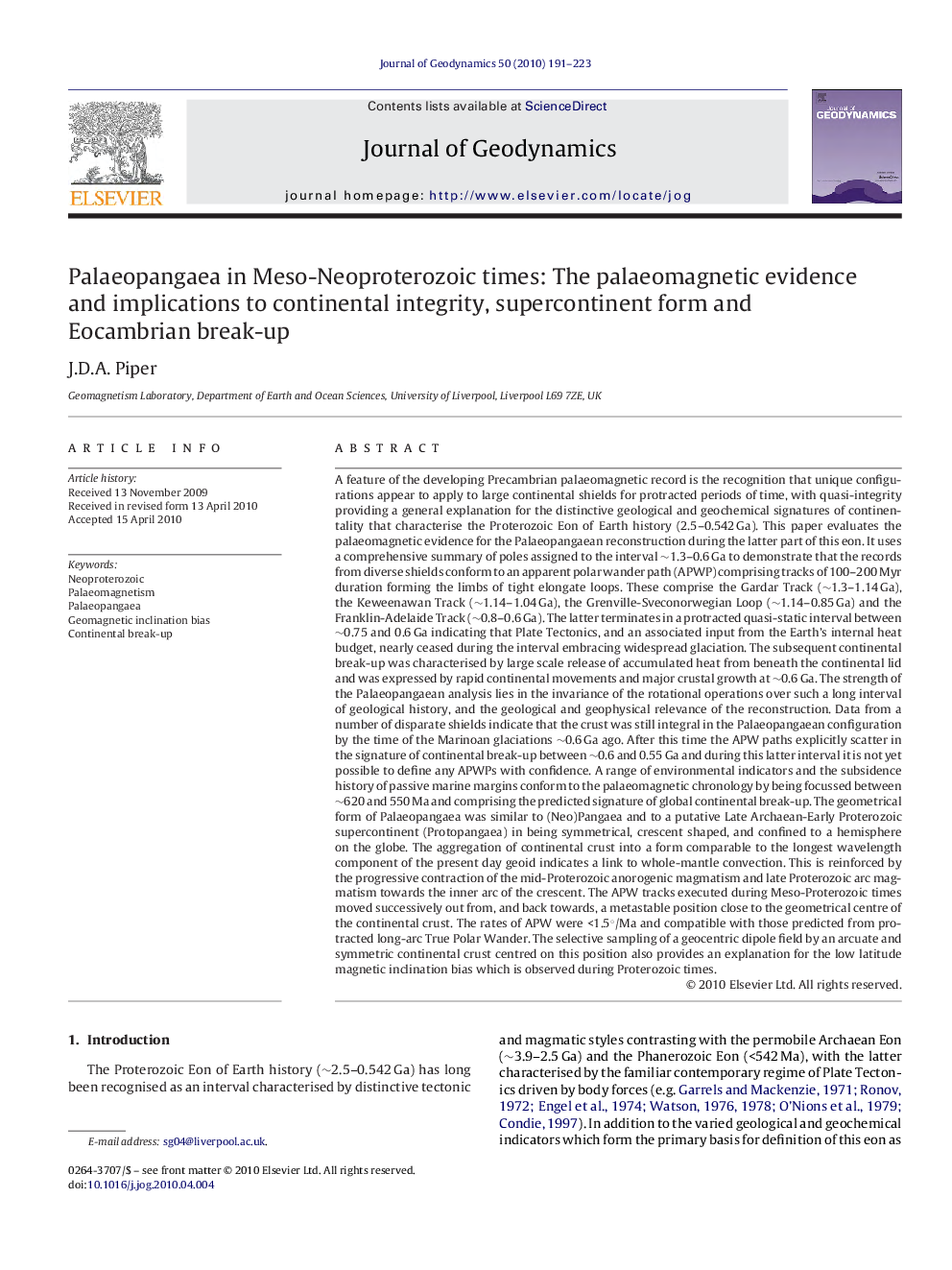| Article ID | Journal | Published Year | Pages | File Type |
|---|---|---|---|---|
| 4688533 | Journal of Geodynamics | 2010 | 33 Pages |
A feature of the developing Precambrian palaeomagnetic record is the recognition that unique configurations appear to apply to large continental shields for protracted periods of time, with quasi-integrity providing a general explanation for the distinctive geological and geochemical signatures of continentality that characterise the Proterozoic Eon of Earth history (2.5–0.542 Ga). This paper evaluates the palaeomagnetic evidence for the Palaeopangaean reconstruction during the latter part of this eon. It uses a comprehensive summary of poles assigned to the interval ∼1.3–0.6 Ga to demonstrate that the records from diverse shields conform to an apparent polar wander path (APWP) comprising tracks of 100–200 Myr duration forming the limbs of tight elongate loops. These comprise the Gardar Track (∼1.3–1.14 Ga), the Keweenawan Track (∼1.14–1.04 Ga), the Grenville-Sveconorwegian Loop (∼1.14–0.85 Ga) and the Franklin-Adelaide Track (∼0.8–0.6 Ga). The latter terminates in a protracted quasi-static interval between ∼0.75 and 0.6 Ga indicating that Plate Tectonics, and an associated input from the Earth's internal heat budget, nearly ceased during the interval embracing widespread glaciation. The subsequent continental break-up was characterised by large scale release of accumulated heat from beneath the continental lid and was expressed by rapid continental movements and major crustal growth at ∼0.6 Ga. The strength of the Palaeopangaean analysis lies in the invariance of the rotational operations over such a long interval of geological history, and the geological and geophysical relevance of the reconstruction. Data from a number of disparate shields indicate that the crust was still integral in the Palaeopangaean configuration by the time of the Marinoan glaciations ∼0.6 Ga ago. After this time the APW paths explicitly scatter in the signature of continental break-up between ∼0.6 and 0.55 Ga and during this latter interval it is not yet possible to define any APWPs with confidence. A range of environmental indicators and the subsidence history of passive marine margins conform to the palaeomagnetic chronology by being focussed between ∼620 and 550 Ma and comprising the predicted signature of global continental break-up. The geometrical form of Palaeopangaea was similar to (Neo)Pangaea and to a putative Late Archaean-Early Proterozoic supercontinent (Protopangaea) in being symmetrical, crescent shaped, and confined to a hemisphere on the globe. The aggregation of continental crust into a form comparable to the longest wavelength component of the present day geoid indicates a link to whole-mantle convection. This is reinforced by the progressive contraction of the mid-Proterozoic anorogenic magmatism and late Proterozoic arc magmatism towards the inner arc of the crescent. The APW tracks executed during Meso-Proterozoic times moved successively out from, and back towards, a metastable position close to the geometrical centre of the continental crust. The rates of APW were <1.5°/Ma and compatible with those predicted from protracted long-arc True Polar Wander. The selective sampling of a geocentric dipole field by an arcuate and symmetric continental crust centred on this position also provides an explanation for the low latitude magnetic inclination bias which is observed during Proterozoic times.
